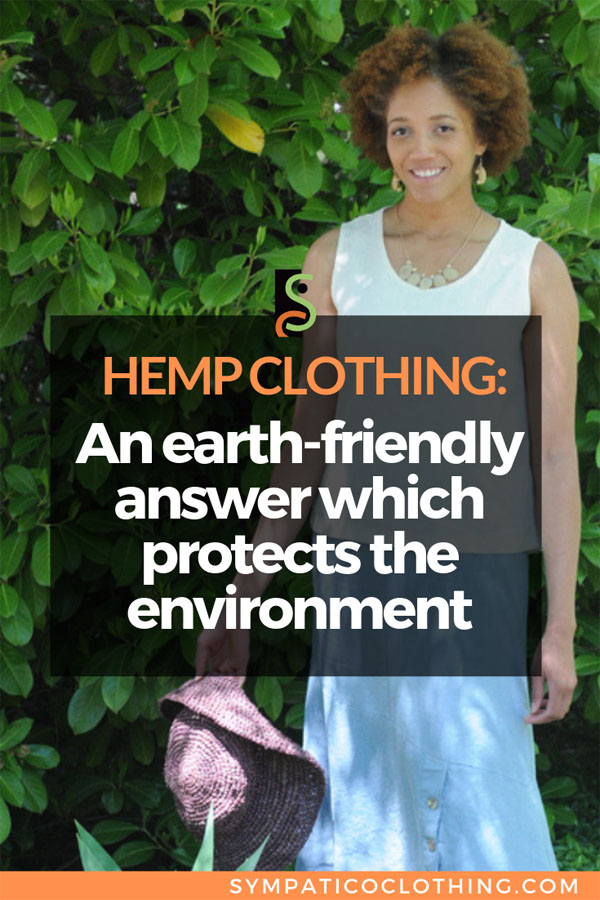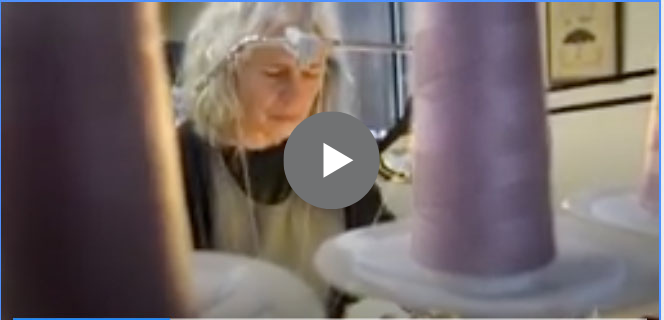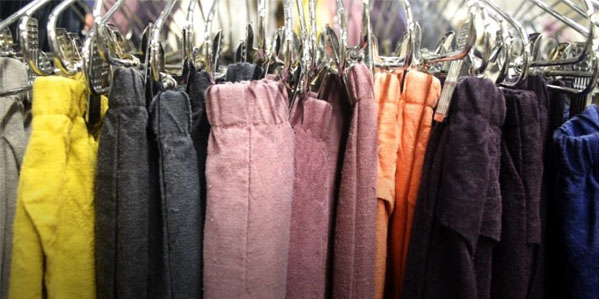Hemp Clothing: An Earth-Friendly Answer
Posted by Rose on 2nd Aug 2022
Truly sustainable, clothes made of hemp are an alternative to polluting fibers such as polyester.
As an advocate for hemp clothing, Sympatico was featured on KTVL News 10 in Medford, Oregon. The resulting story by reporter Felicia Le’Cher is part of a series the station produces called “In the Weeds.” With most of the hemp being produced in our area intended to meet the burgeoning demand for CBD, I saw the series as a great chance to expand public awareness of hemp as a textile.
Hemp has been cultivated for thousands of years, and traditionally every part of the plant has been used. Its fibrous outer layers were historically used for rope, paper and sails. Its medicinal properties have been well known for millennia too; as just one example, midwives have used hemp teas to ease childbirth in many cultures. Today, industrial hemp is turning up in everything from home building materials to sound-deadening panels in autos.
Given my couple of minutes of fame, I wanted to stress all the advantages of hemp clothing while also explaining a little about how hemp fibers are produced. I also wanted to touch on hemp’s legal problems in the past. As I explain in the clip, hemp was outlawed right along with its cousin, marijuana, in 1937. The US government made no distinction between industrial hemp and marijuana until 2018 when cultivation of hemp was finally made legal again. Until that momentous change, hemp was in effect lumped together with marijuana as a forbidden Class 1 narcotic—the same designation given heroin!
In comparing the processing of cotton and other fibers to hemp, I point out that hemp is bleached using a hydrogen peroxide solution. Those other fibers are treated with chlorine-based bleaches that release dangerous dioxins into the environment. The solution used to scrub hemp is safely returned to the environment as water. And unlike cotton, industrial hemp is grown without the use of chemical fertilizers and pesticides. Much of hemp’s initial processing is accomplished directly in the fields in a natural process known as retting.The wet fiber is allowed to break down in the fields before being transported to mills for further processing. And unlike cotton, which quickly exhausts soils due to its nutrient-rich demands, hemp actually helps aerate and restore bioactivity in soil.
A further advantage of hemp clothing is its amazing durability. After all, this is the same stuff from which windjammer sails and gold miners’ pants were made. But even when hemp clothes have finally become too threadbare to wear, they’ll naturally biodegrade back into the earth. (I’ve even used Sympatico fabric rags as a mulch to suppress weeds in the garden.)
Contrast that with the production and lifetime impact of fabrics such as polyester, made from petrochemicals. Not only is their manufacture and dyeing highly toxic to the environment, each time they’re washed, synthetic fabrics release millions of microfibers that are polluting our rivers and oceans. I recently blogged about microfiber pollution— it’s a rapidly developing ecological disaster.
The hemp content in Sympatico women’s wear is blended with Tencel, another sustainable fiber that’s produced without environmental damage. Tencel, which is made in a closed-loop manufacturing system, adds a beautiful drape and hand to the fabric while also helping protect our planet’s ecosystems. You can learn more about the unique hemp/Tencel blend used in Sympatico clothing here.

Share:







